This Itechguide teaches you how to show file extensions in windows 10. The guide covers steps for 2 methods to show file extensions in windows 10.
Option 1: Show File Extensions from File Explorer
- Right-click Windows 10 Start menu and click File Explorer.
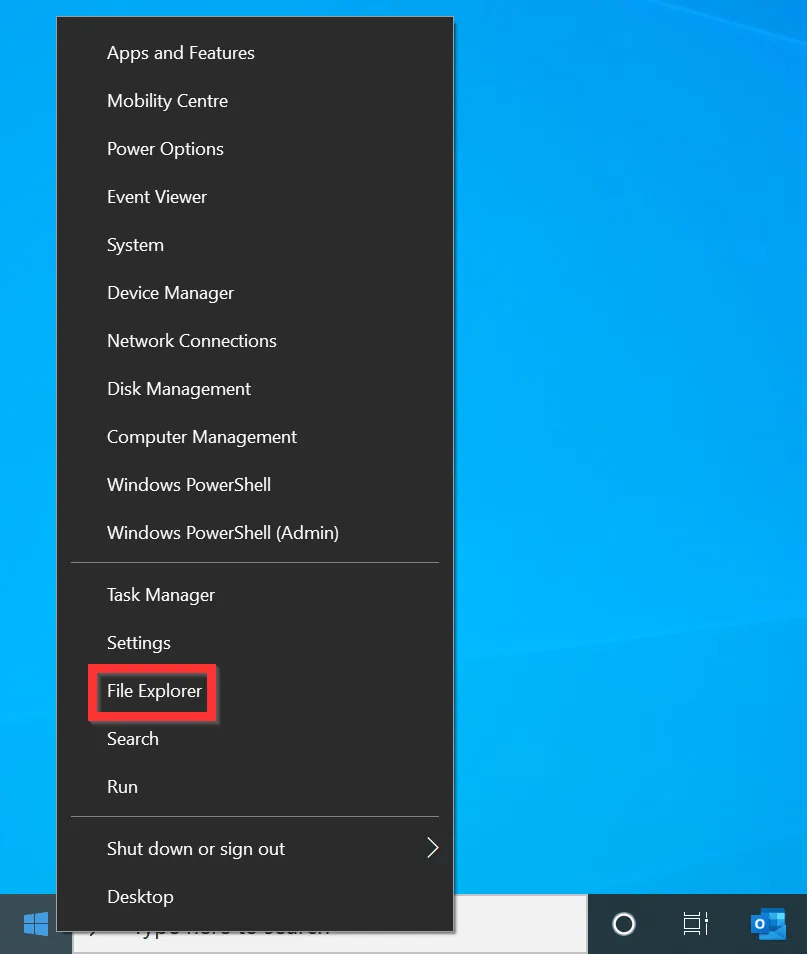
- On File Explorer, click the View tab to expand it.
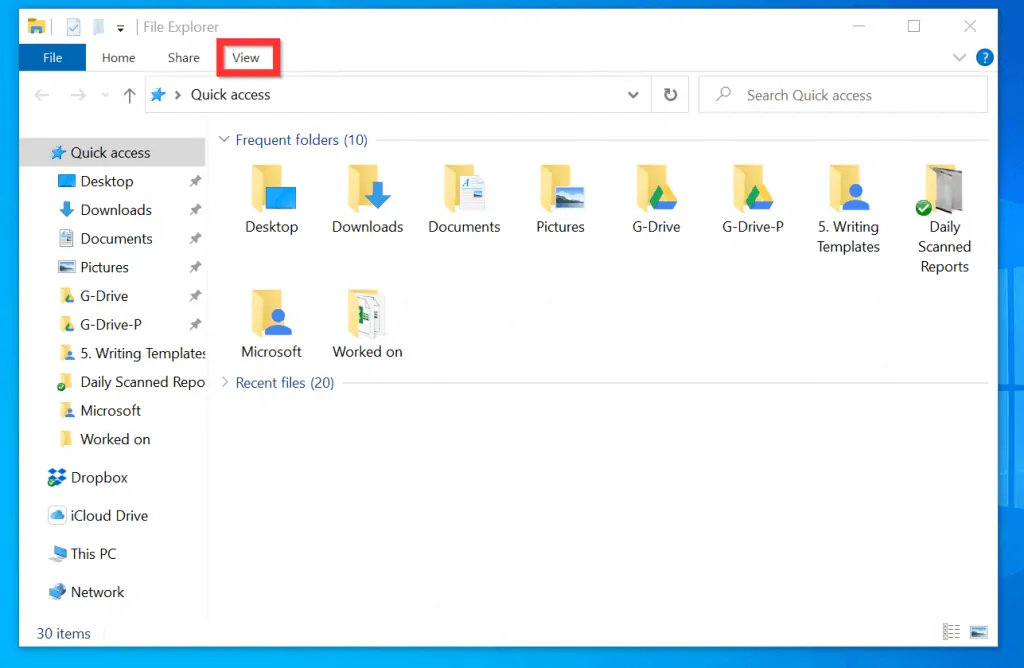
- Then, on the top right of the expanded View tab, click Options. Folder Options will open.
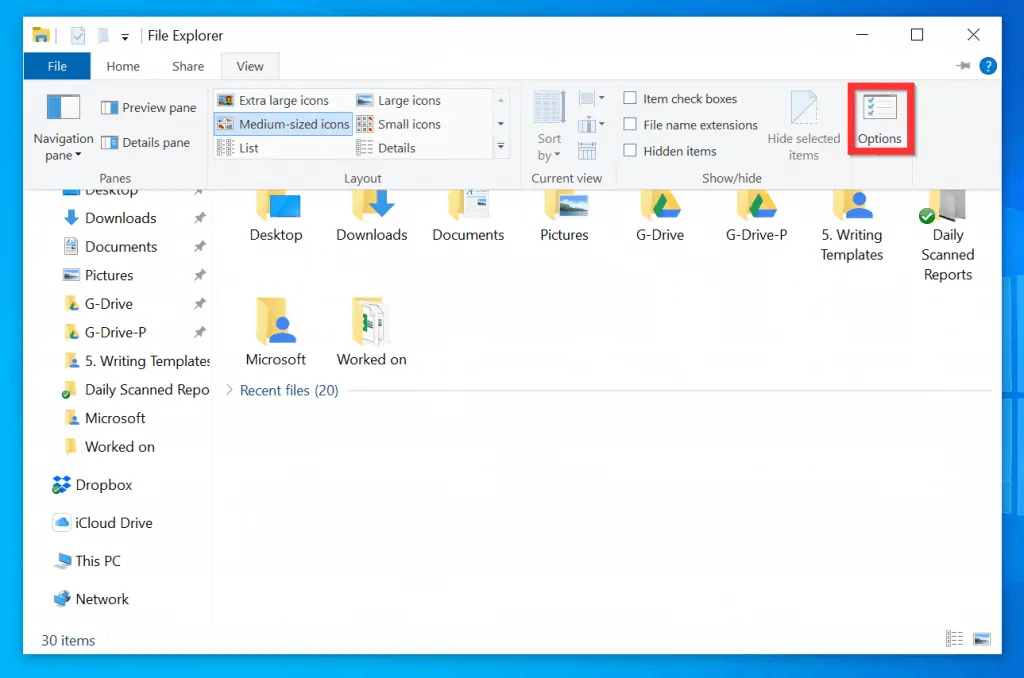
- On the Folder Options window, click the View tab.
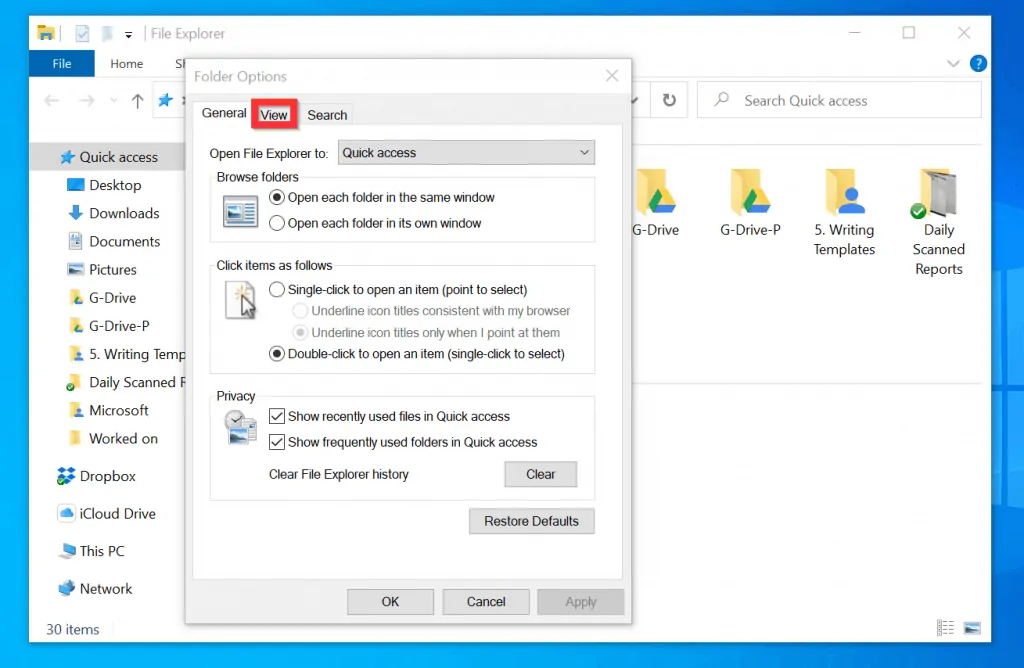
- Finally, on the Advanced settings section of Folder Options View tab, uncheck the Hide extensions for known file types checkbox.
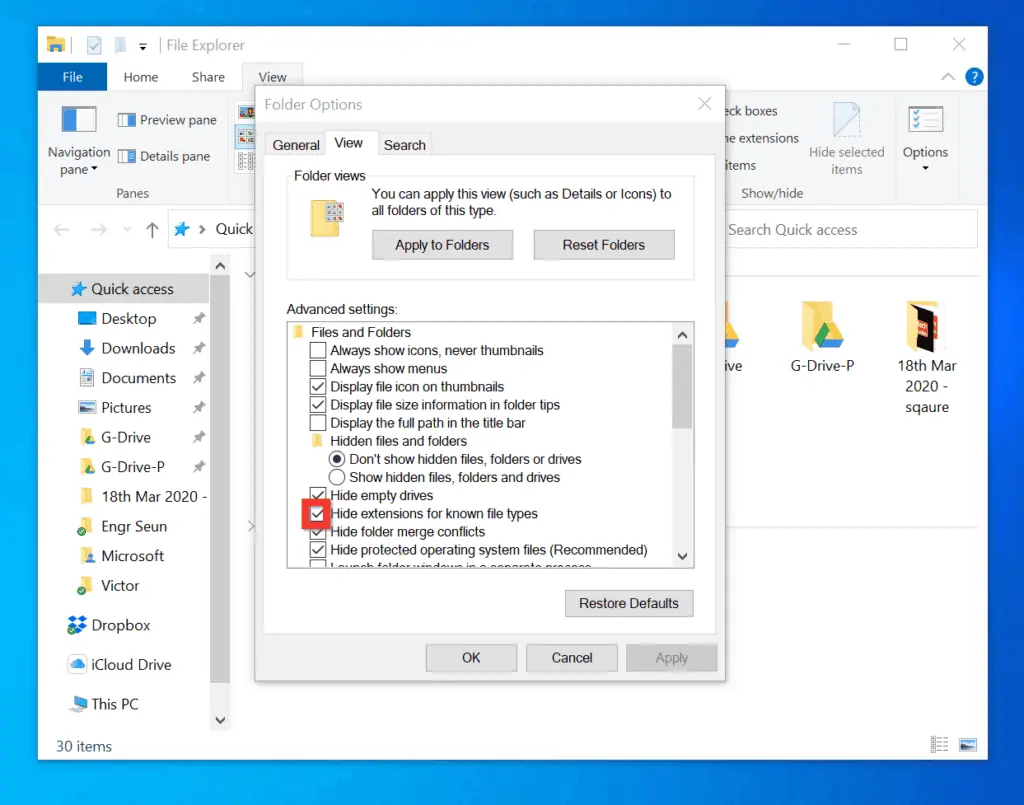
- After unchecking the Hide extensions for known file types checkbox, to save your changes, click OK.
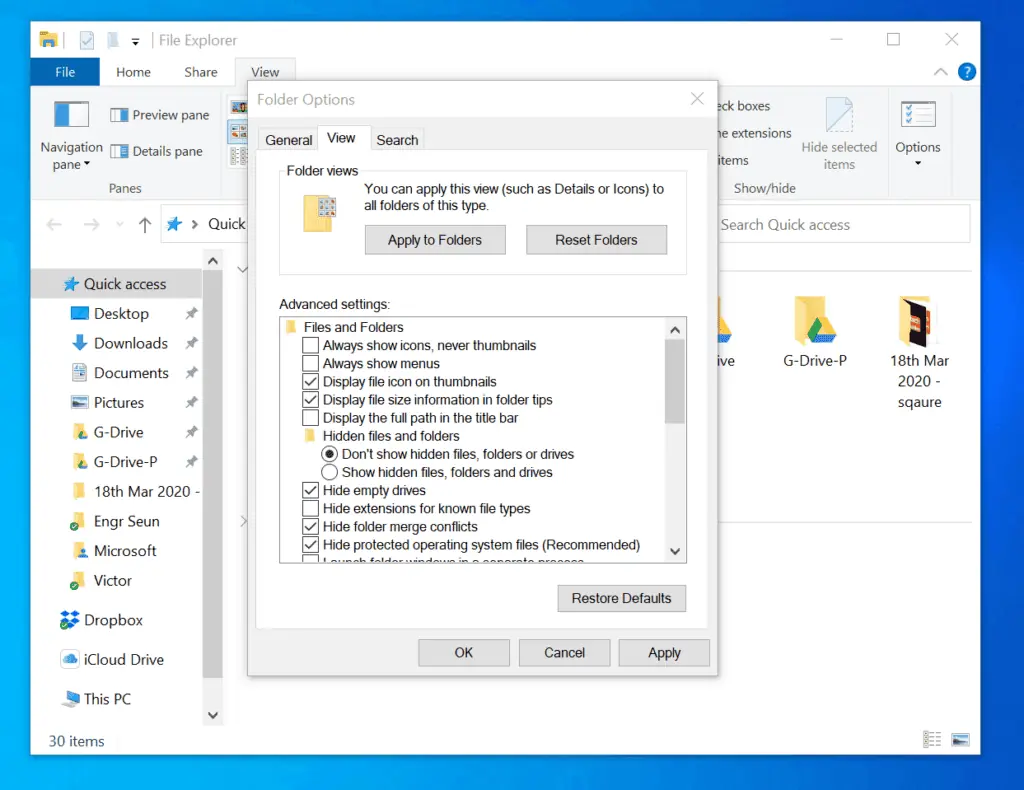
Option 2: Show File Extensions from the Control Panel
- Type control panel in the search box. Then, from the search results, click Control Panel.
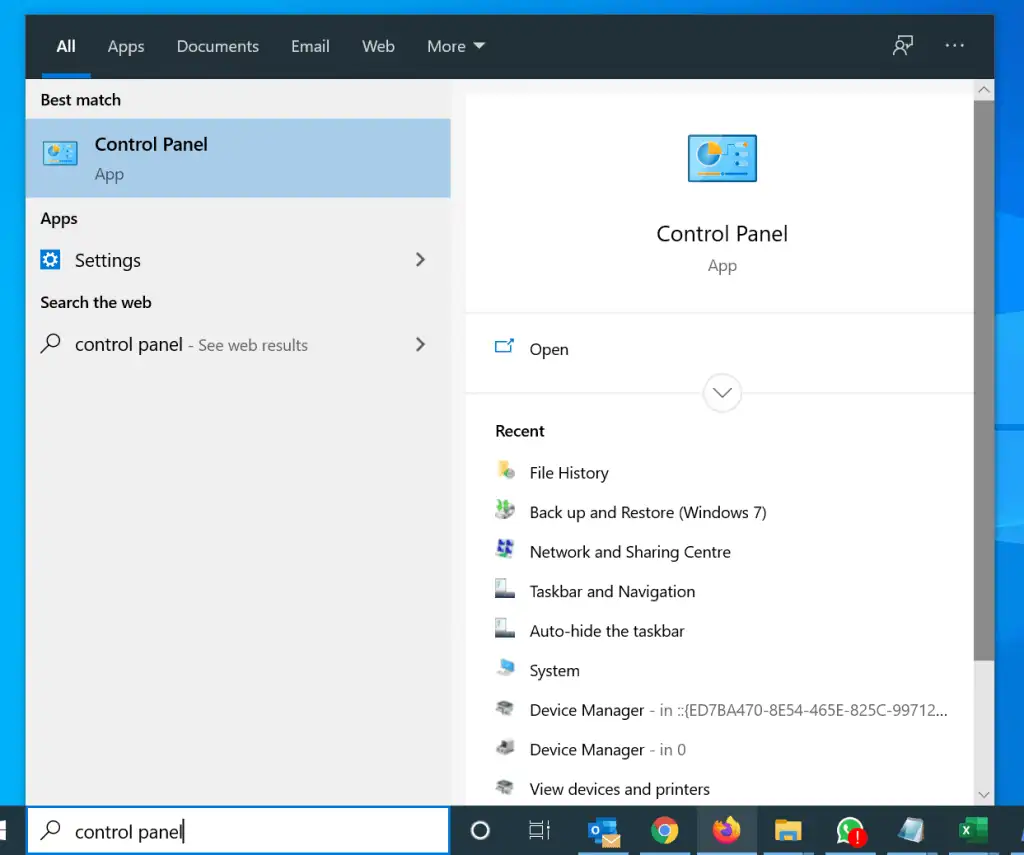
- On the top right of Control Panel, if View by is set to Category, click the drop-down and select Small icons or Large icons.
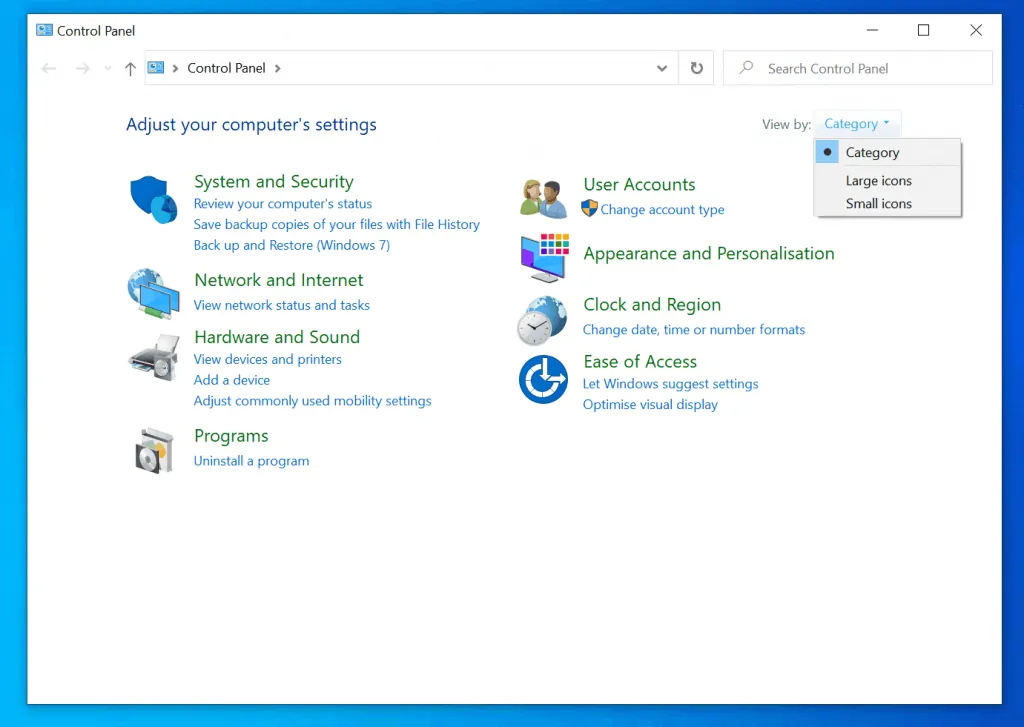
- Then, on the modified Control Panel view, click File Explorer Options.
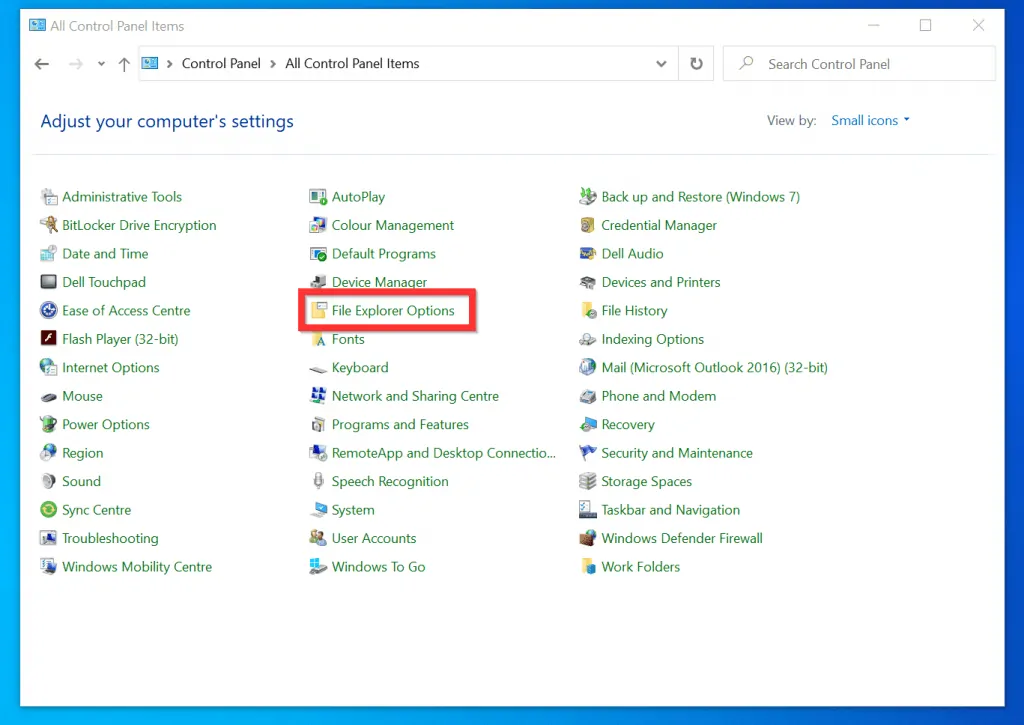
- When the File Explorer Options window opens, click the View tab.
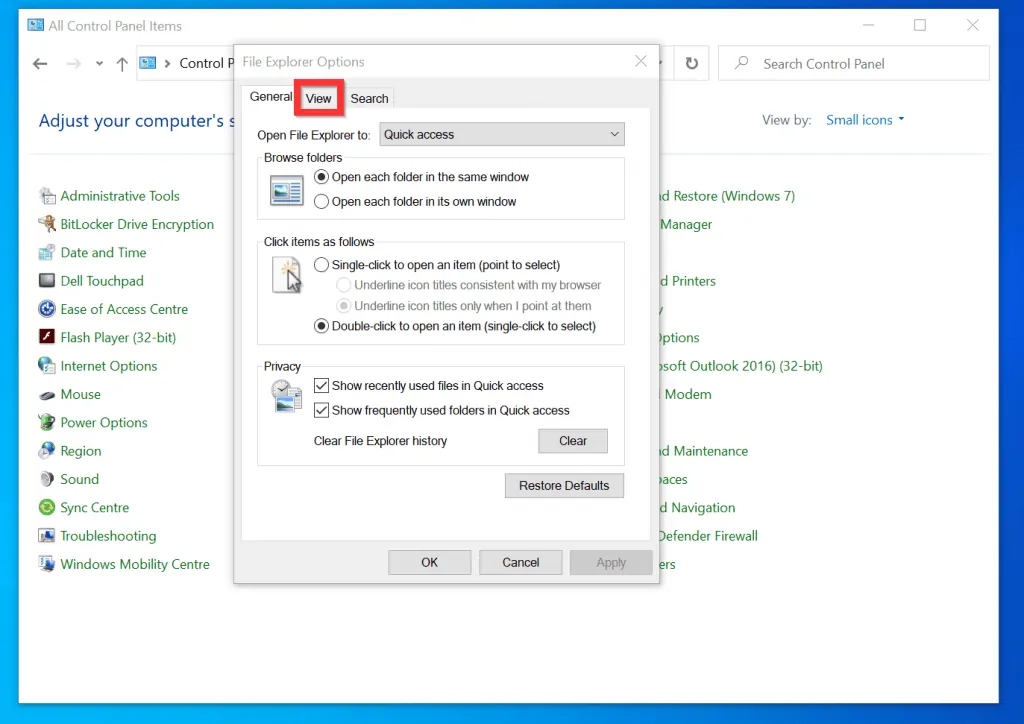
- Finally, on the Advanced settings sections of File Explorer Options View tab, uncheck Hide extensions for known file types checkbox and click OK.
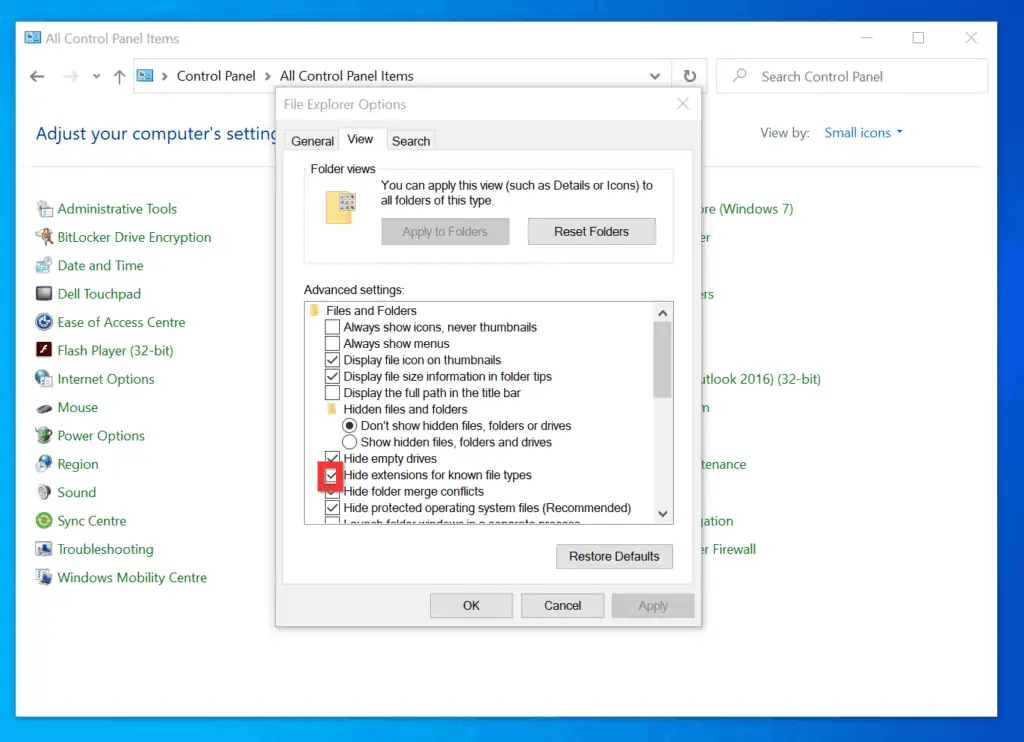
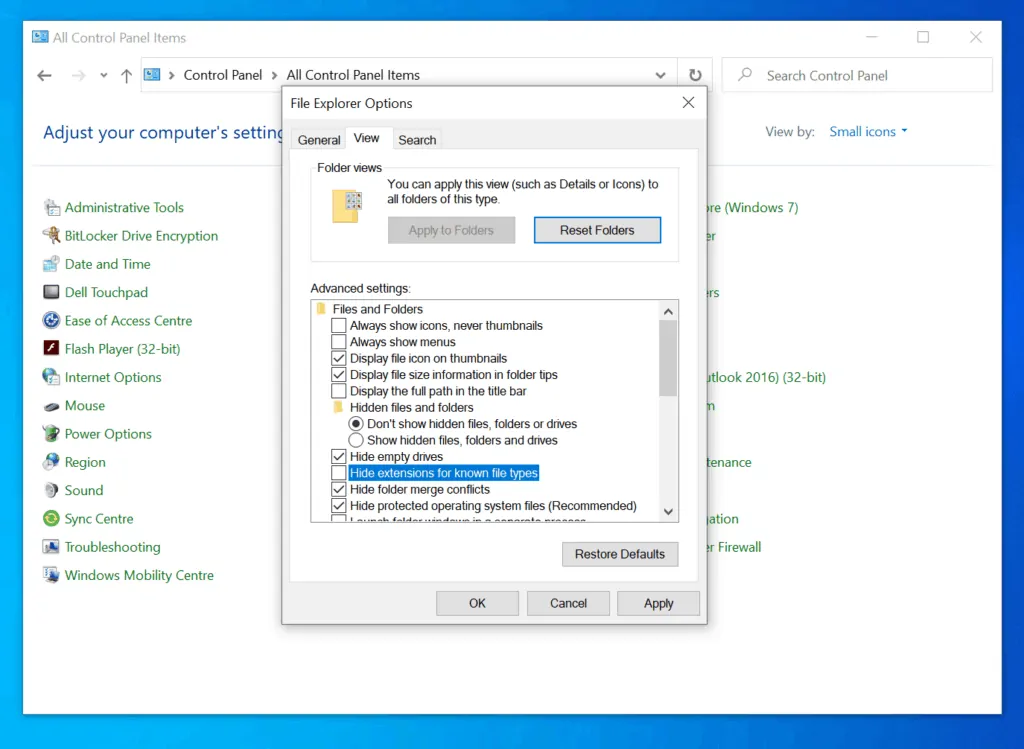
Option 3: Show File Extensions from Registry
Editing Windows registry can be potentially dangerous for your Operating System. Proceed with the steps in this section with caution.
- Right-click Windows 10 Start menu and click Run.
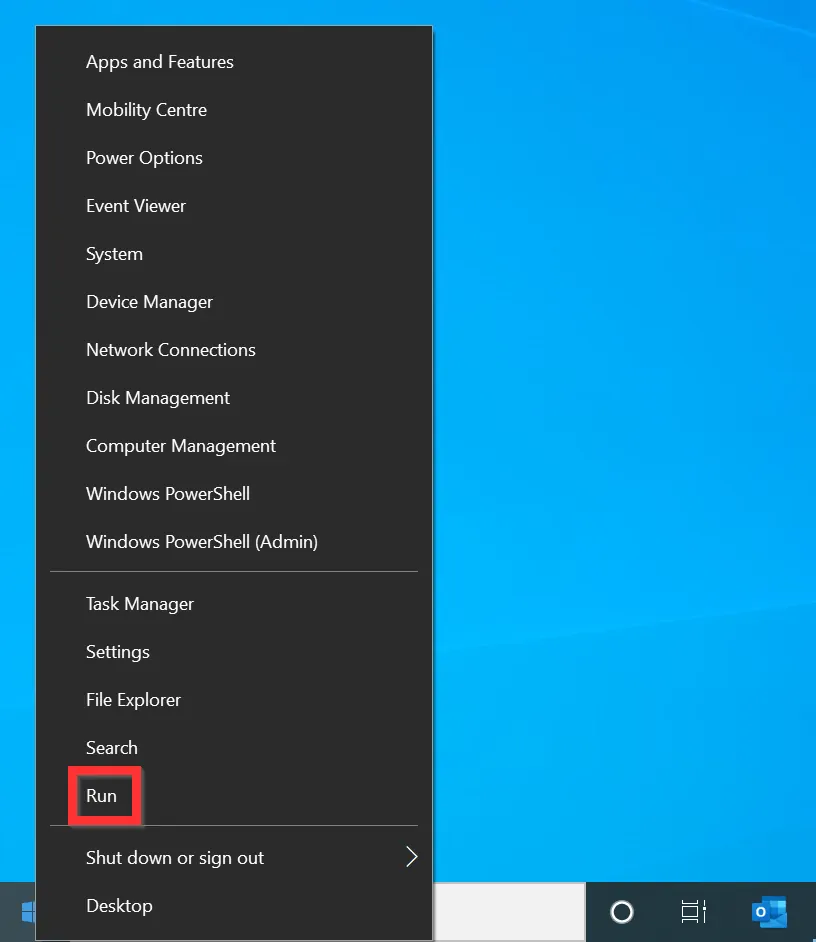
- On the Run Window, type RegEdit and click OK.
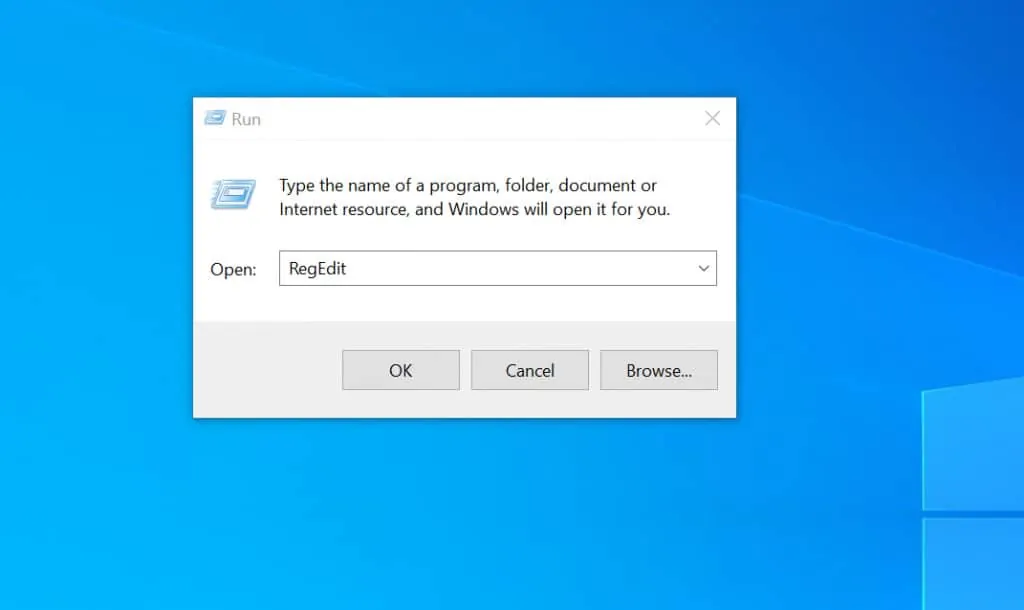
- If you receive a User Account Control confirmation window, click Yes. The Windows Registry Editor will open.
- When Registry Editor opens, navigate to the path below:
HKEY_CURRENT_USER\Software\Microsoft\Windows\CurrentVersion\Explorer\Advanced
- On the left pane, highlight the Advanced key. Then, on the details pane, double-click the HideFileExt REG_DWORD key to open it for editing.
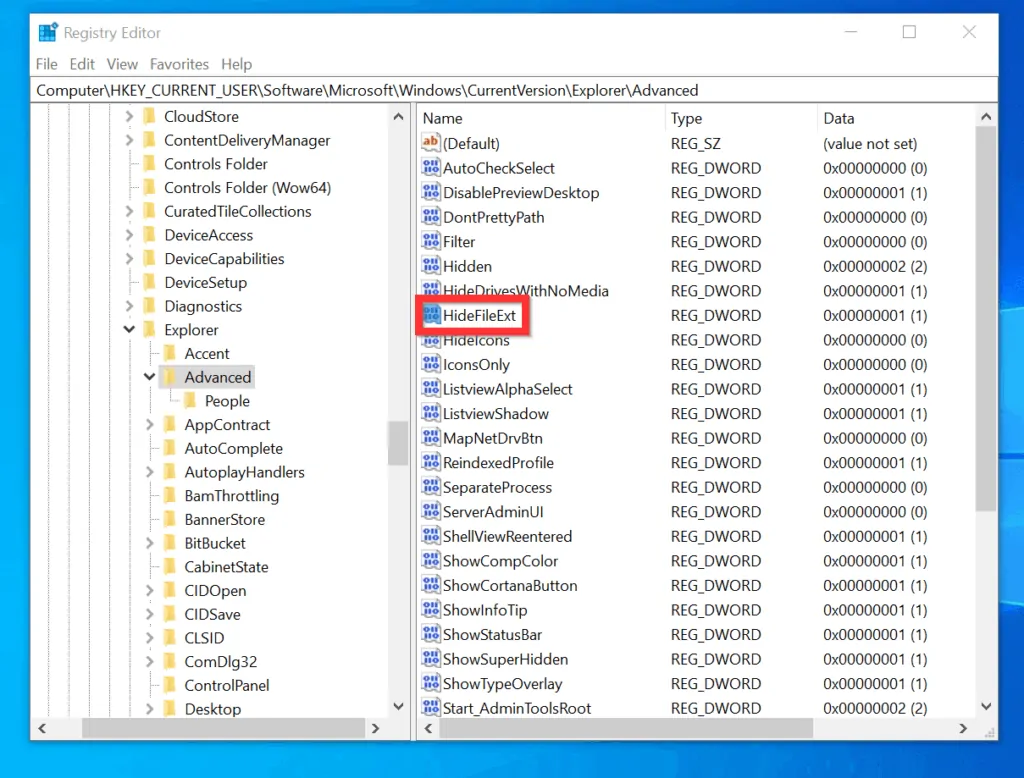
- When the HideFileExt REG_DWORD key opens for editing, change the Value data from 1 to 0. To save your changes, click OK.
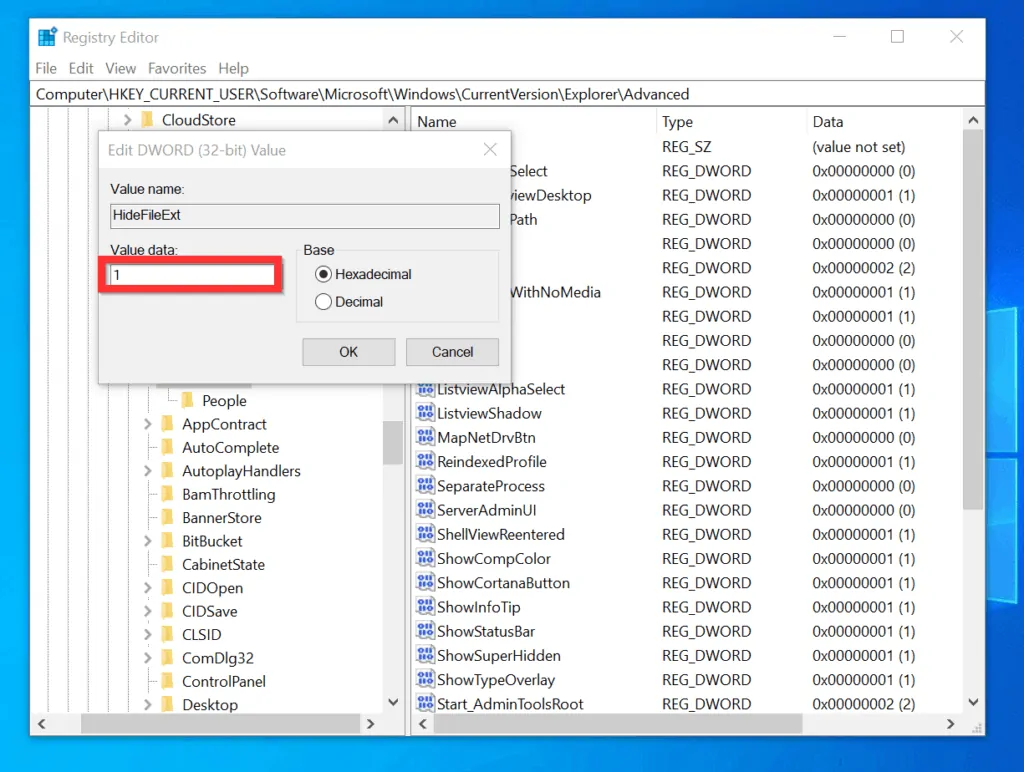
- Before you exit Windows Registry, confirm that the value in the Data column of HideFileExt key is 0.
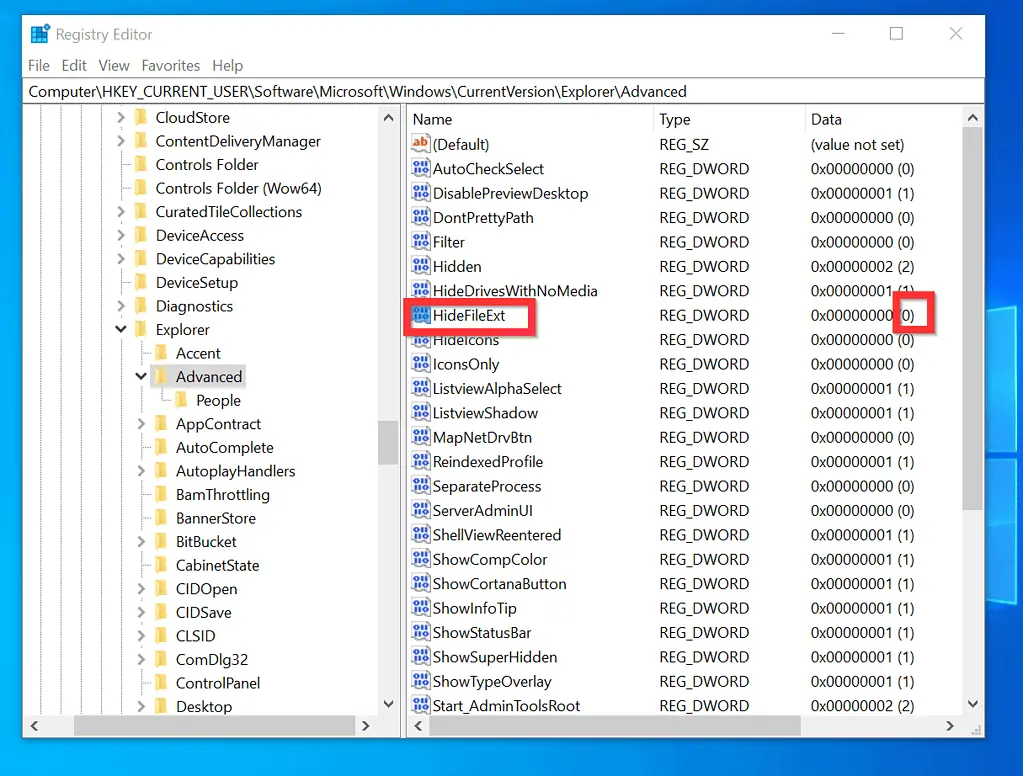
- After modifying Windows Registry, you may need to restart your PC for your changes to take effect.
It is very easy to show file extensions in Windows 10! I hope you found this Itechguide helpful. If you found it helpful, click on “Yes” beside the “Was this page helpful” question below.
You may also express your thoughts and opinions by using the “Leave a Comment” form at the bottom of this page.
Finally, for more Windows 10 Itechguides, visit our Windows 10 How-To page.



![How To Run Sysprep (Generalize) In Windows 10 [2 Methods]](https://www.itechguides.com/wp-content/uploads/2022/05/8-2.webp)